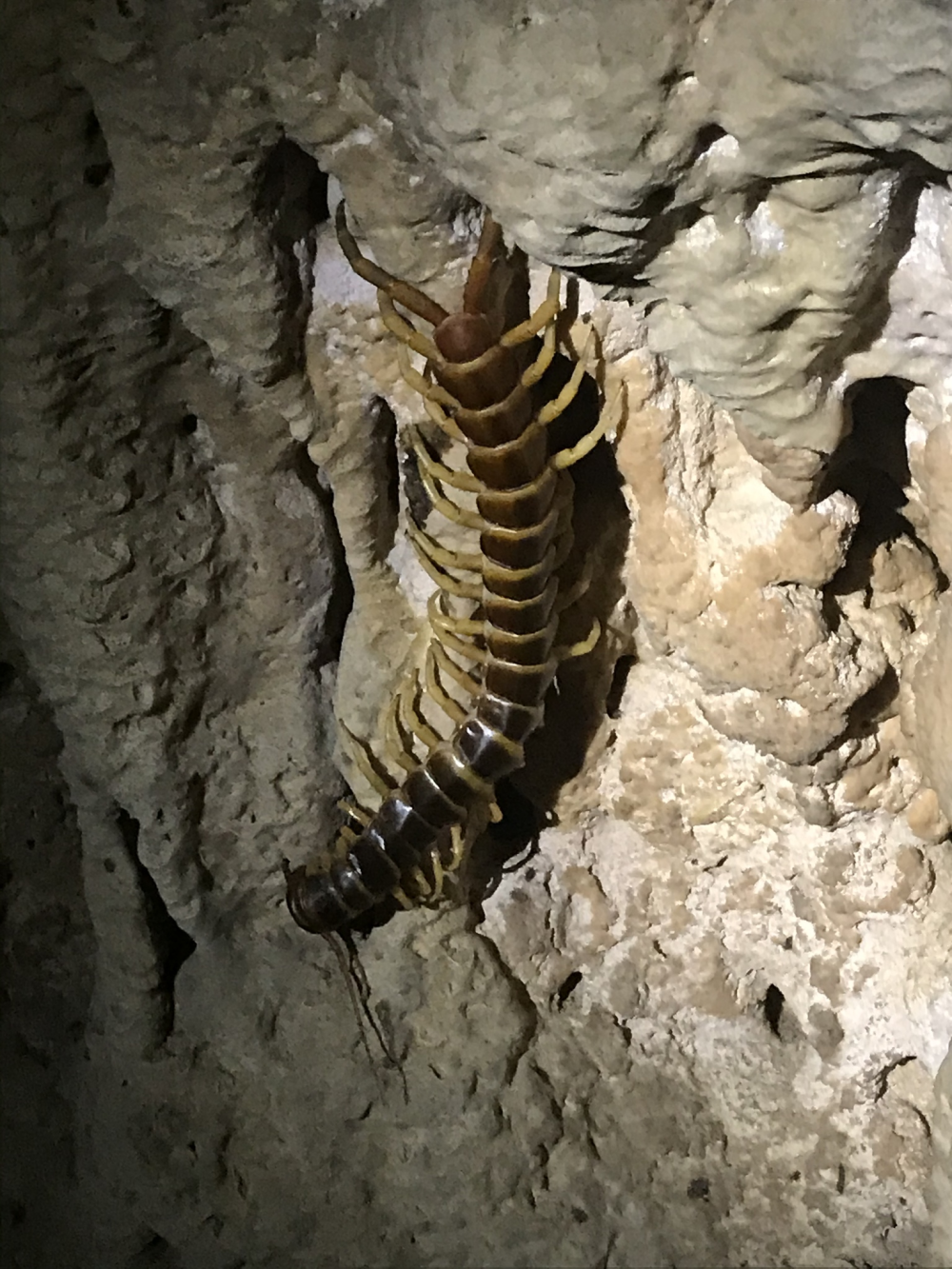Giant centipedes can be found in several habitats across the globe, but none are as impressive as Scolopendra gigantea, also known as the Amazonian giant. It’s the largest centipede species in the world, stretching to over 30 centimeters (12 inches) in length, and has an appetite to match.
Armed with a powerful venom, these giant centipedes have evolved to become bat-hunting specialists. Their skills were outlined in a 2005 paper that revealed S. gigantea was predating three bat species in Venezuela: Mormoops megalophylla, Pteronotus davyi, and Leptonycteris curasoae.
Even as the largest centipedes in the world, the feat is an impressive one. Bats are fast-moving prey that for S. gigantea represent a meal that’s substantially bigger than themselves, but they’ve evolved two killer tactics for taking them down.
Like mine spiders, giant centipedes love a cave, and S. gigantea is partial to scuttling up cave walls and ceilings to reach perching bats. Impressively, they can even catch flying bats mid-air by hanging from the cave ceiling and grabbing unlucky victims that flap within range.

Like mine spiders, the largest centipedes on Earth love a good cave.
The second skill that makes them trained bat assassins is that they’re able to subdue big prey thanks to powerful venom. Centipedes famously have a pair of legs for each body segment, but the first pair on the cranial segment are modified into a pincer-like tools known as forcipules or “poison claws”, which they use to inject prey with venom, such as flying bats.
Details of giant centipede predation events on bats paint a picture of the grisly fate that awaits their prey.
“On 21 December 2000, at 21:45 h, we found a S. gigantea perching from the ceiling of [a cave] entrance, while feeding on a dead M. megalophylla,” explained the authors of the 2005 paper. The giant centipede was “attached to the ceiling with only the last five pairs of legs, held the bat using its first eight pairs of legs (excluding the forcipules, or poison claws), and fed while it moved its head from side to side.”
You can see a photo of the impressive maneuver here.
“The centipede started eating around the bat’s neck, continued into the chest, and then into the abdominal region. When we collected the two specimens, the centipede had devoured about 35% of the bat’s body mass.”
Clearly, giant centipedes are a formidable threat to bats, snakes, and other small vertebrates, but what about humans? Do we have anything to fear from the world’s largest centipede?
The short answer is yes, but probably not death. Centipede bites can cause pain, swelling, tissue death, and infections that are considered clinically significant in humans. However, they’re unlikely to be fatal unless you develop a secondary infection or anaphylaxis.
The potential of scolopendromorph centipede venom was the focus of a 2021 study that revealed it contains weaponry in the form of toxic proteins borrowed from bacteria and fungi. This kind of interspecies trading occurs through a phenomenon coined “horizontal gene transfer,” and it facilitates the movement of genetic material between distantly related organisms.
The discovery marked “the largest, most diversely sourced contribution of horizontal gene transfer to the evolution of animal venom composition known to date,” explained co-author Dr Ronald Jenner from the Natural History Museum, London, to IFLScience.
So, if you’re ever lucky enough to see the world’s largest centipede in the flesh, we’d recommend keeping to a respectful distance. Your curious index finger is no match for the poison claws of giant centipedes.
Source Link: A Giant Centipede That Lurks In The Amazon Is A Bat-Hunting Specialist